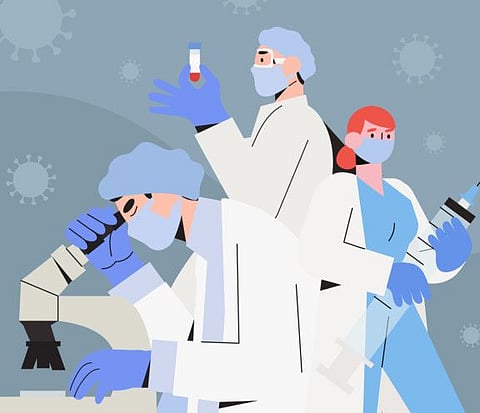Business of health care needs a new operating model
Even if COVID-19 pandemic recedes, health care model requires a bit of stock taking

Also In This Package
As we come to terms with COVID-19 pandemic is not ending anytime soon, one important factor has emerged for the health care system — the need to find innovative means of survival. The sudden and ruthless wave of the virus has left the industry vulnerable to several challenges ... and a looming question of how it can survive the future.
With threats of biological warfare, there are few chances — if at all — that we can go back to what we knew as normal. On the contrary, as an essential pillar of people’s welfare, health care needs to rethink the working of the industry and come up with a more secure model to build immunity and a disaster management plan for COVID-19 and similar situations.
First things first — we need to draw several lines of defence so that hospitals can not only continue with business-as-usual during and post COVID-19, but have the relevant resources to counter should a similar situation arise in future.
One of the biggest responsibilities hospitals took on themselves was to protect healthy people from exposure to COVID-19 patients, and in the process, they suffered serious financial losses. Had there been alternative routes or platforms that non-COVID-19 patients could use for elective procedures and outpatient services, the situation would have been very different and far more optimistic.
Therefore, building separate hospitals for COVID-19 and non-COVID-19 patients is of prime importance, because even now — in fact, especially now — when all elective procedures are back in place in hospitals, the threat of infection is very real.
Separate ways
Similarly, there’s now a refocus on stand-alone diagnostic centres. Experts are discussing this segregation as non-infectious zones outside hospitals which non-COVID-19 patients could visit for ancillary functions such as X-rays, MRIs, ultrasound and procedures that are not core hospital functions. Not just that, but dedicated centres of excellence, such as cardiology, ophthalmology, dentistry, spine, birthing and obstetric centres should be placed outside hospital premises to minimise the risk of infection.
Fortunately, we do have a few examples of these in the UAE. However, to ensure maximum protection for the residents, the model needs to be followed at a much larger scale.
The pandemic has also brought to the fore the complexity of the health care ecosystem, which used to be far simpler previously and which needs to be addressed now. The current health care landscape is fraught with overlaps with everybody doing everything, leading to further complications, especially in the COVID-19 situation.
The authorities, opinion makers and thought leaders can sit down together and discuss the health care ecosystem, so that in the future each stakeholder in the sector has a defined role to play. We need to go ahead with this kind of ecosystem approach so that in future nothing is compromised ... and nobody suffers.
Counting the cost
But are these measures financially viable?
Yes, if people start believing them. It also depends largely on how sound the health care infrastructure of a country is to support these innovations. In a country like the UAE, which has been setting health care goals for the entire world, it is entirely possible. We have witnessed mass screening centres opening up within days to allow thousands to be tested for COVID-19 on daily basis.
We also have a very mature disaster management programme where in a week’s time a hospital could be built. Moreover, the government is proactively planning long- and short-term measures to ensure safety and security for all UAE residents during and post-pandemic times.
At a recently held meeting, government officials discussed measures such as launching digital immunisation cards, activating pre-emptive digital contact tracing using data monitoring tools, integrated data linking and licensing of virtual medical services providers, among others.
One thing the virus has taught is that the health care industry should be prepared for any eventuality. It came as a bolt from the void and left the world reeling under its impact. So, based on the learnings, let’s move forward to create a system equipped to manage disaster that comes without a warning.
— Dr. Raza Siddiqui is Executive Director at RAK Hospital.
Sign up for the Daily Briefing
Get the latest news and updates straight to your inbox









